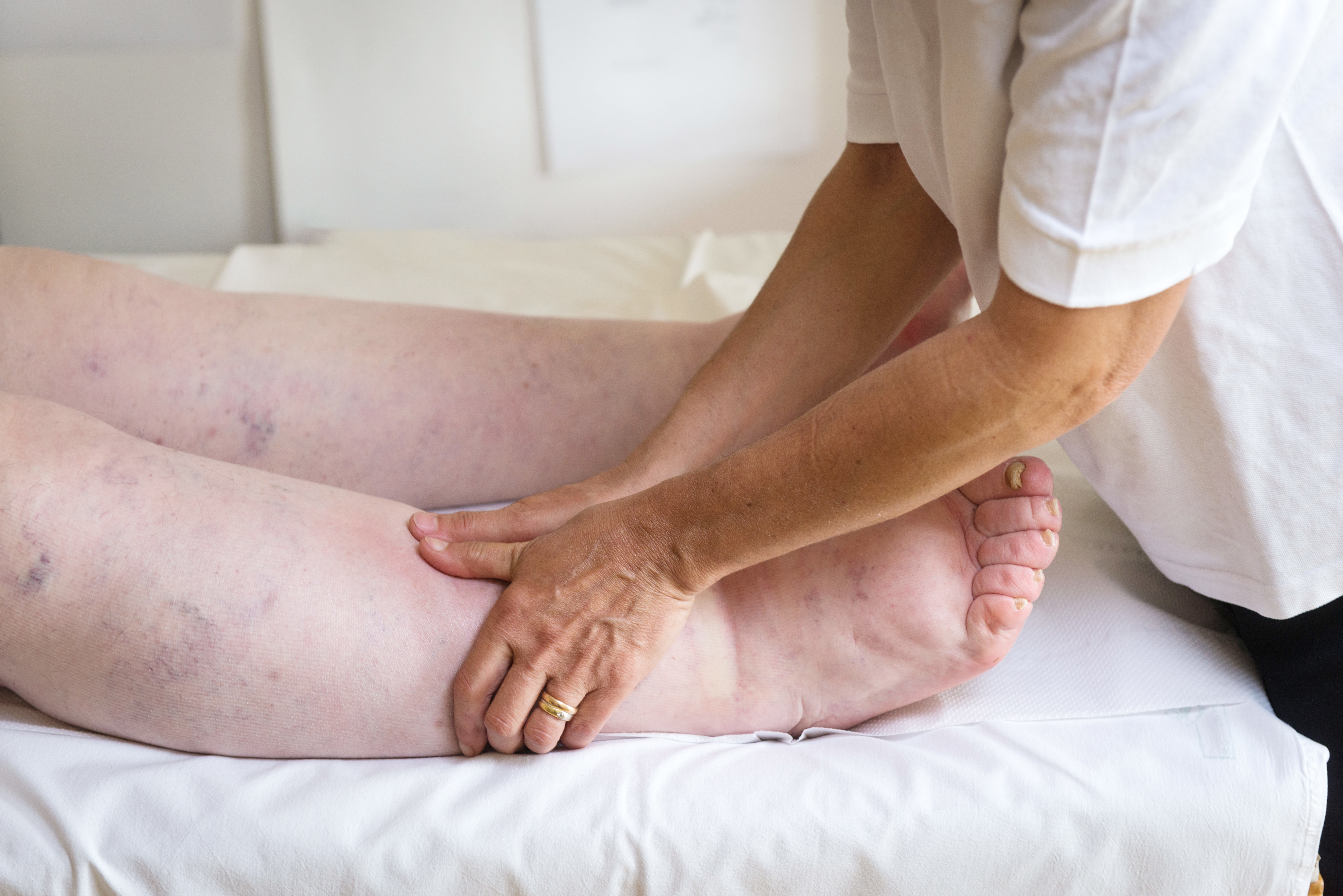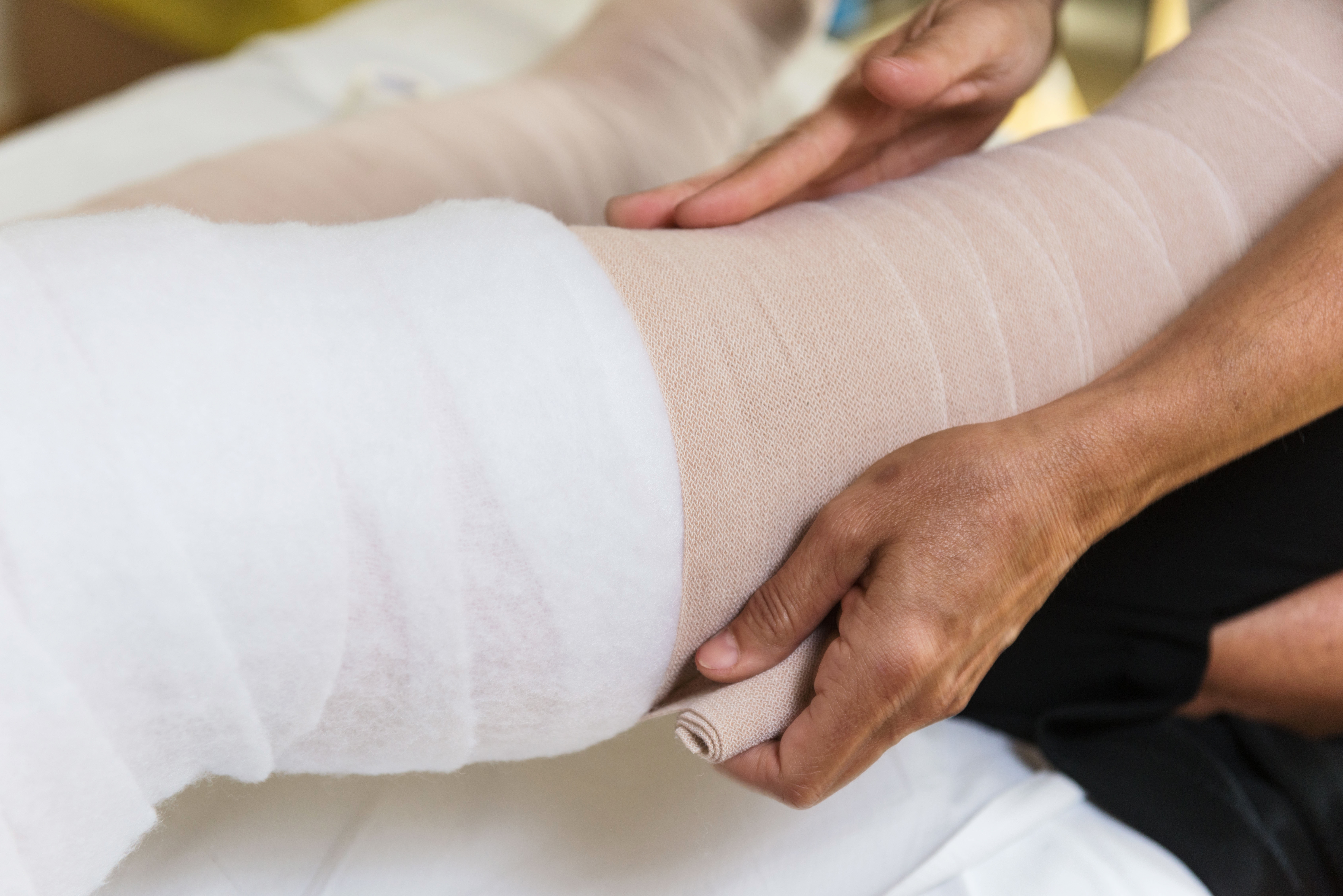Decongestive lymphatic therapy
What is it?
What is it?
Decongestive lymphatic therapy consists of skin care, compression therapy, manual lymphatic drainage, and exercise therapy or movement.
Skin care
Treat your skin with care to prevent infections and to keep it from becoming too dry. Measures you can take include:
- hydrating dry skin
- preventing wounds
- treating wounds as soon as they arise
Compression therapy or wrapping
There are various compression treatment options: The choice depends on the type of oedema, how mobile you are and the wishes of you and the physician.

Bandaging is often the first treatment for lymphoedema. Depending on the type of oedema and where it is located, either short or long-wrapped bandages may be used.
The skin is completely coverred with multiple layers of bandaging (wrapped). Even pressure facilitates fluid drainage. The bandage's even pressure puts pressure on the muscles while they are moving. This pumps away the lymphatic fluid.
Bandages are usually worn for two to four weeks. A patient may stop using bandages as soon as the fluid is sufficiently drained and you can wear an appropriate therapeutic stocking.
Therapeutic elastic stockings replace the bandages once the volume has decreased and no more reduction is expected. The stockings are worn daily (for a maximum of 16 hours per day) to main the decrease in swelling.
There are several types of stockings:
- flat-knit stockings (with seam)
- seamless stockings (no seam)
Both types of stockings are sold in standard sizes and in individualised sizes. There are also stockings with special elastic sections for toes (toe caps), the forefoot, the ankle, or the hands (gloves with or without fingers, and for different-sized fingers).
Therapeutic stockings can also be divided into categories of varying strengths and pressures.
Class 1
- a mild effect on the superficial lymphatic system
- mostly for varicose veins
Class 2
- a moderate effect on the superficial lymphatic system
- used for:
- venous insufficiency with a slight tendency towards oedema
- after an operation for varicose veins
- lymphoedema in the arms
Class 3
- effect on the superficial as well as the deep lymphatic system and other structures
- indicated by:
- extensive varicose veins with oedema
- chronic venous insufficiency (advanced)
- post-thrombotic syndrome
- lymphoedema of the leg (if the lymphoedema is still in the beginning stages)
- severe lymphoedema of the arms
Class 4
- strong effect on the deep lymphatic system and other structures
- indicated by:
- extensive post-thrombotic syndrome
- lymphoedema of the leg (if it is already advanced)
Pressotherapy
For certain types of lymphoedema, a pneumatic compression therapy, or pressotherapy, can form part of the treatment plan. For this treatment, you will receive a band or cuff to wear around your arm or leg. This is connected to an air pump, which will then exert pressure on the oedema fluid, diverting it away from the cuff and toward the armpit or groin.
This massage technique:
- stimulates lymph transport
- manually transports the fluid that cannot be transported towards a place where it can be
- helps the lymphatic system to form new vessels in order to decrease oedema
The massage techniques used for lymphatic drainage are performed by specialised physical therapists. Extended reimbursement can be obtained with a lymph scan.
Exercise therapy may include strength, conditioning and mobilisation training, under the guidance of a physical therapist. A lot of movement has a beneficial impact on the lymphatic circulation and the complete drainage system. The muscle pump increases lymph flow 15-fold.
Something wrong or unclear on this page? Report it.
Latest publication date: 13/08/2024


